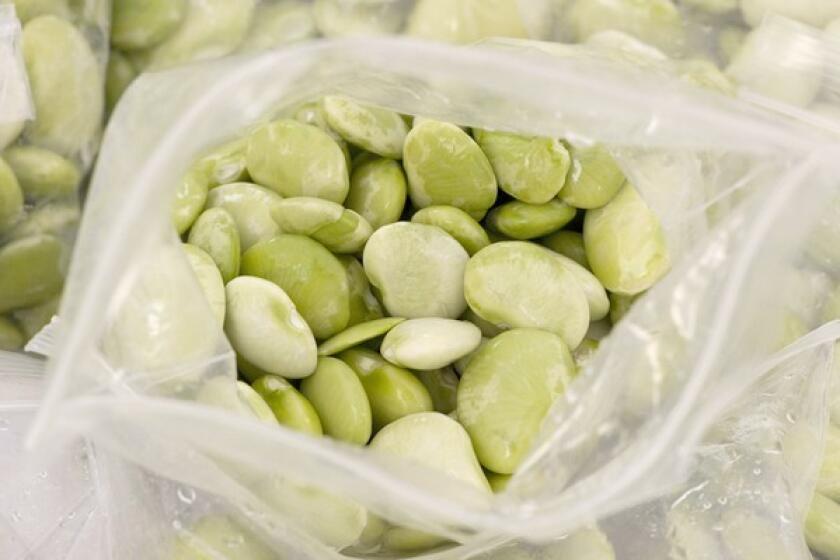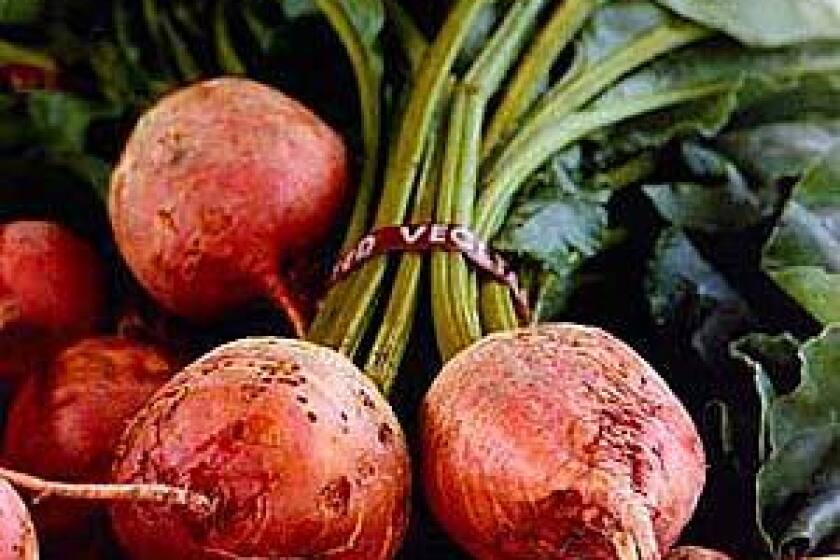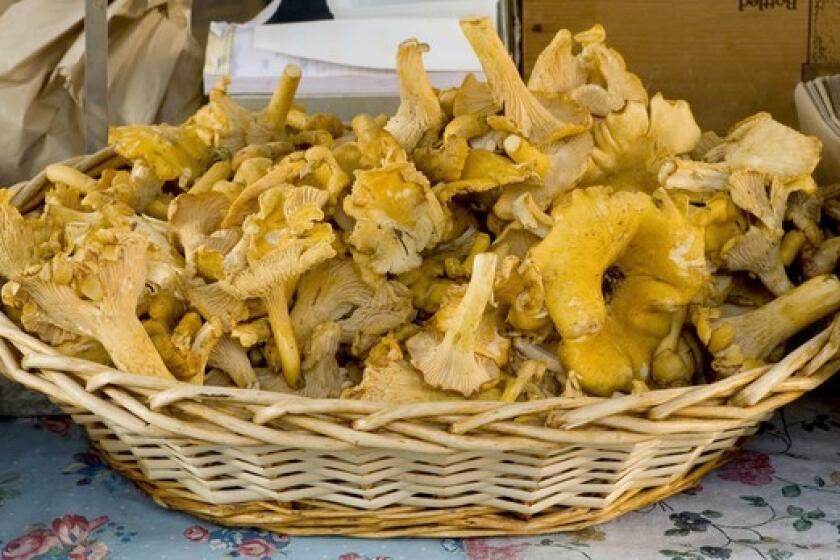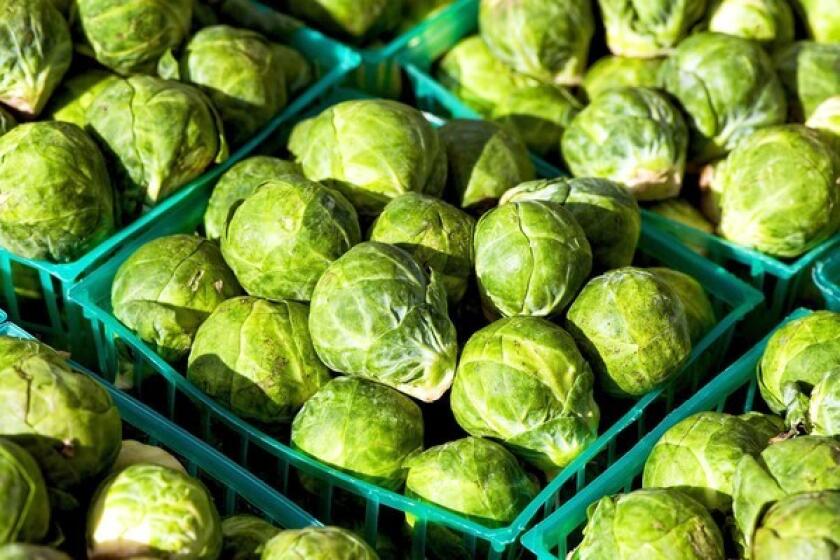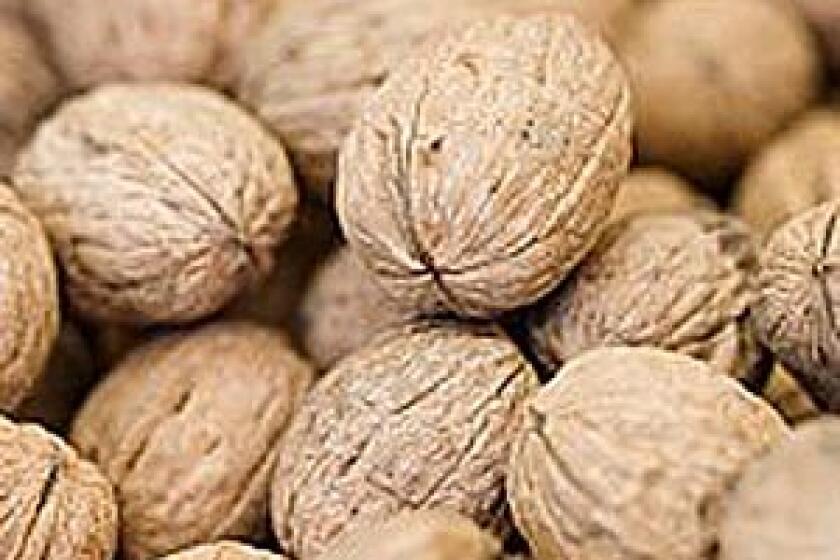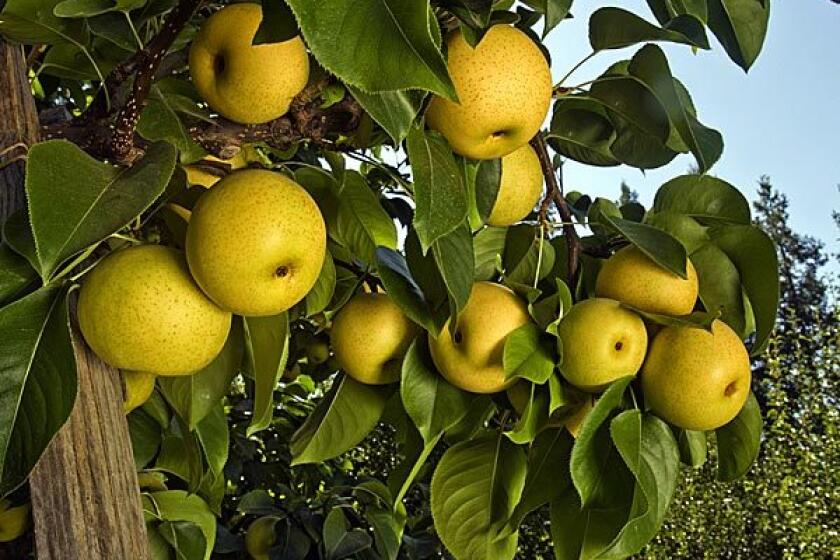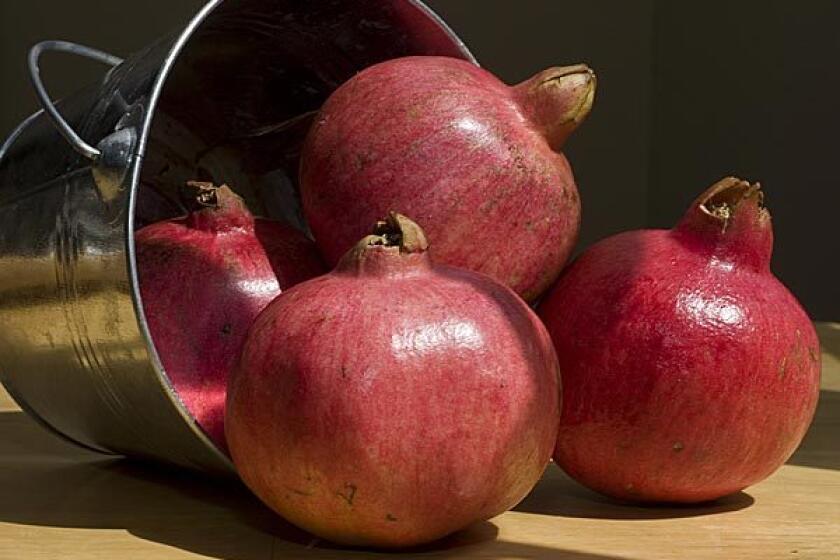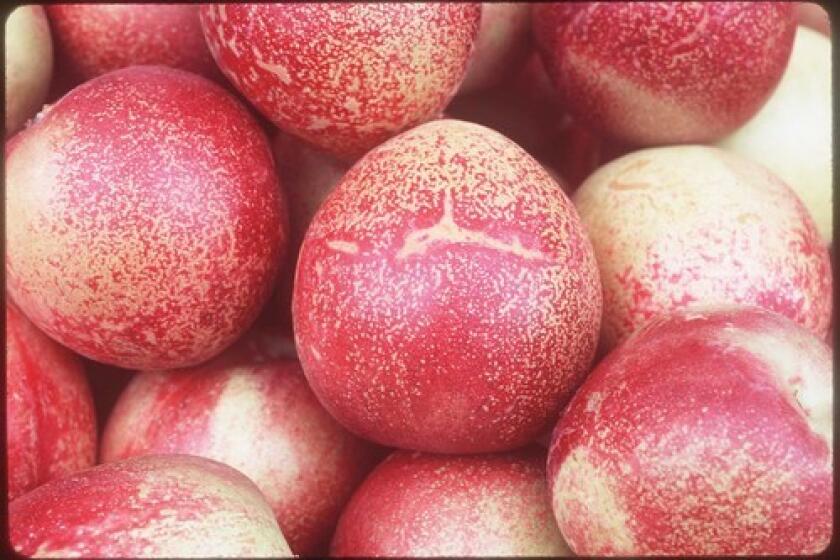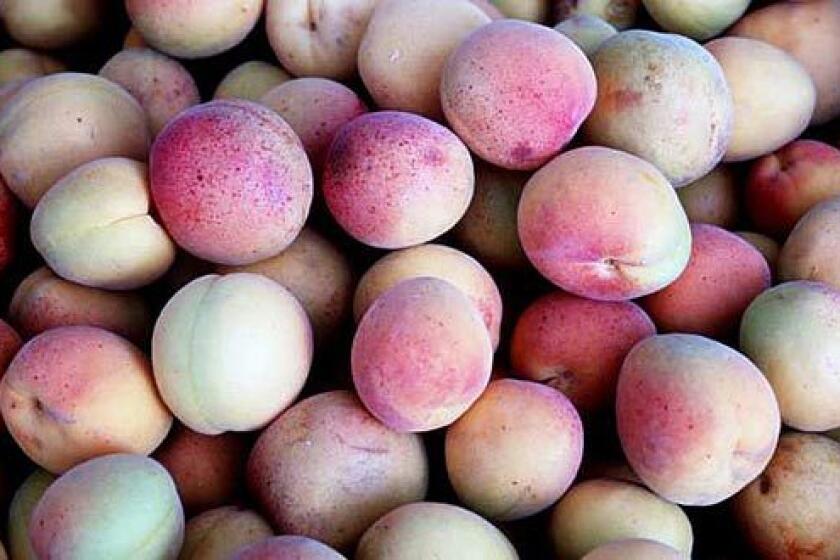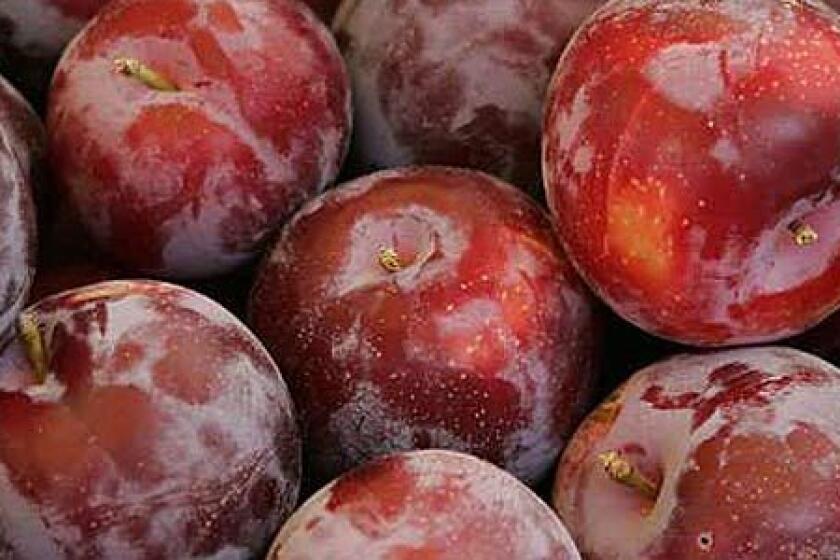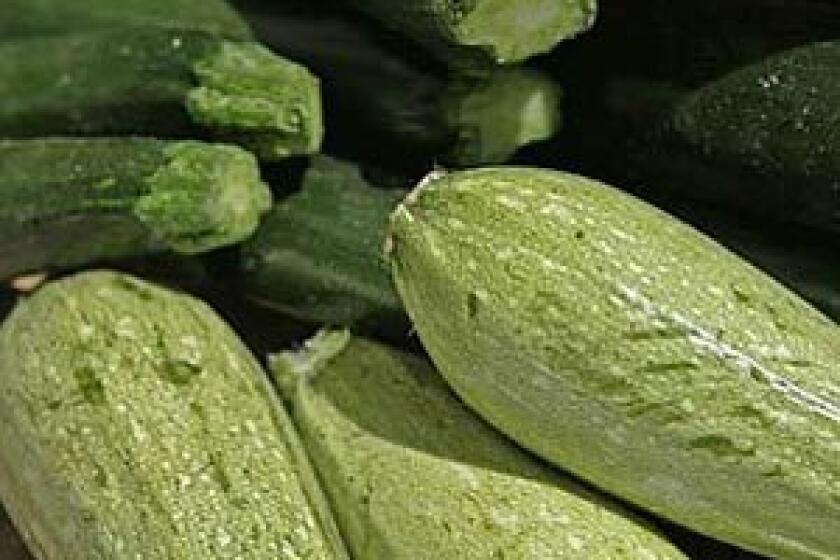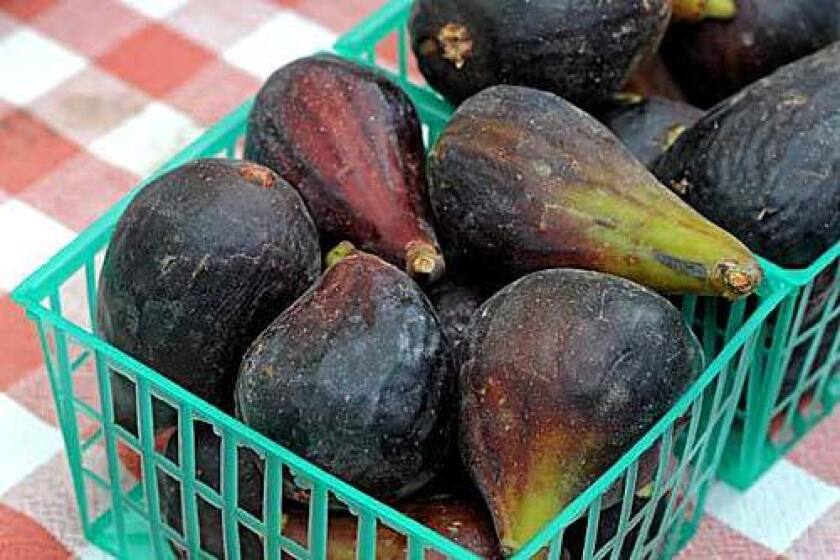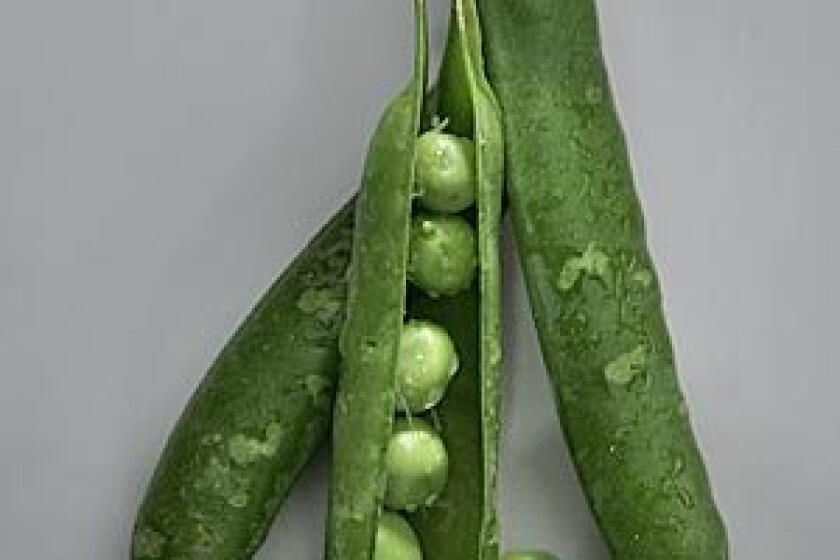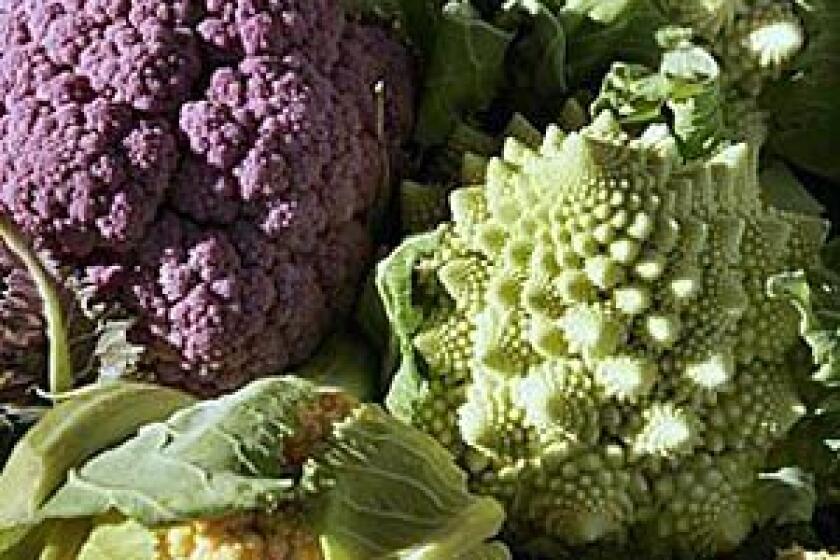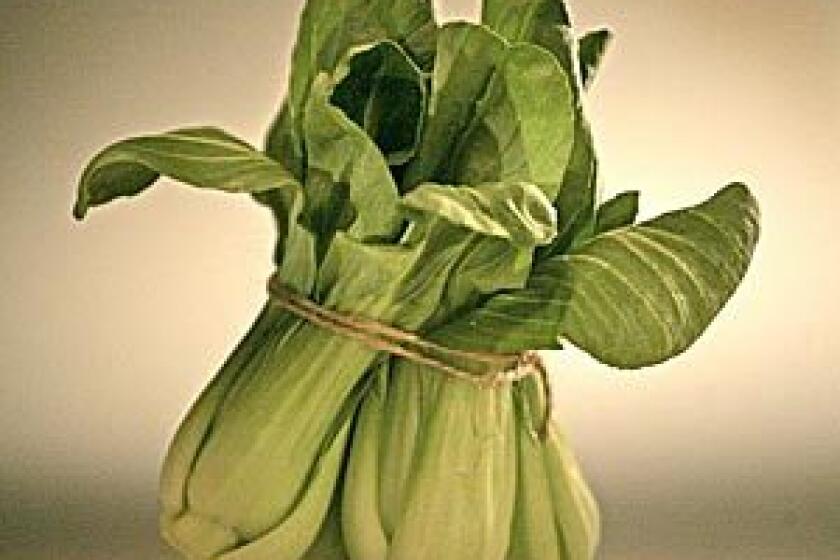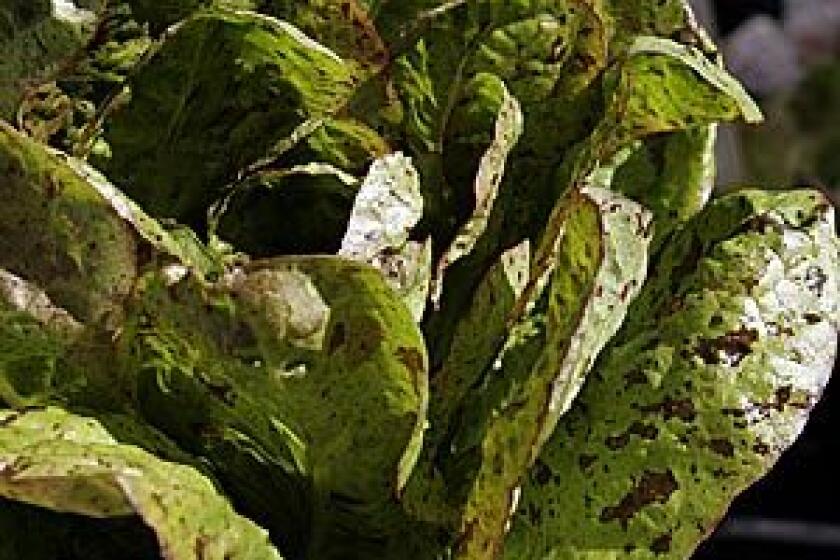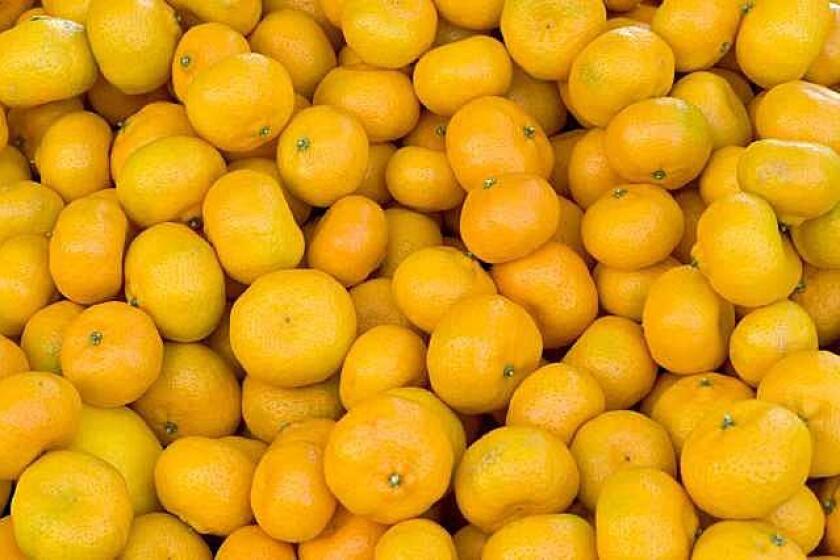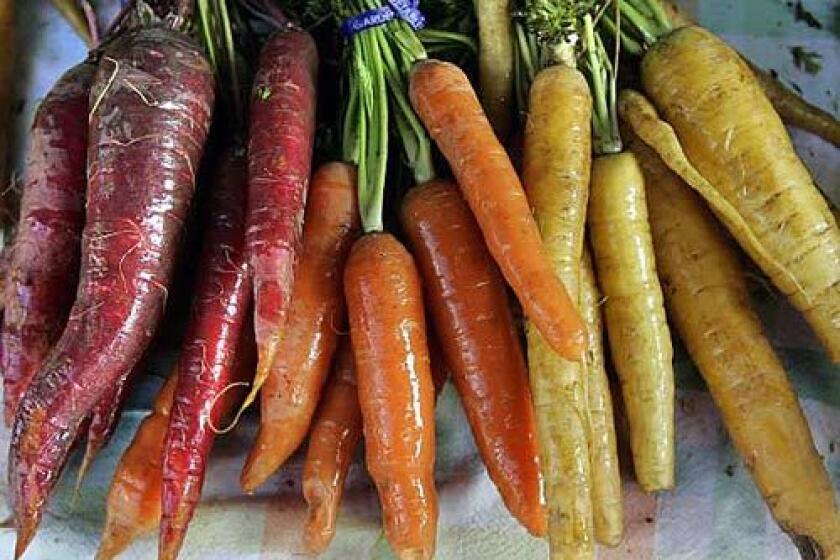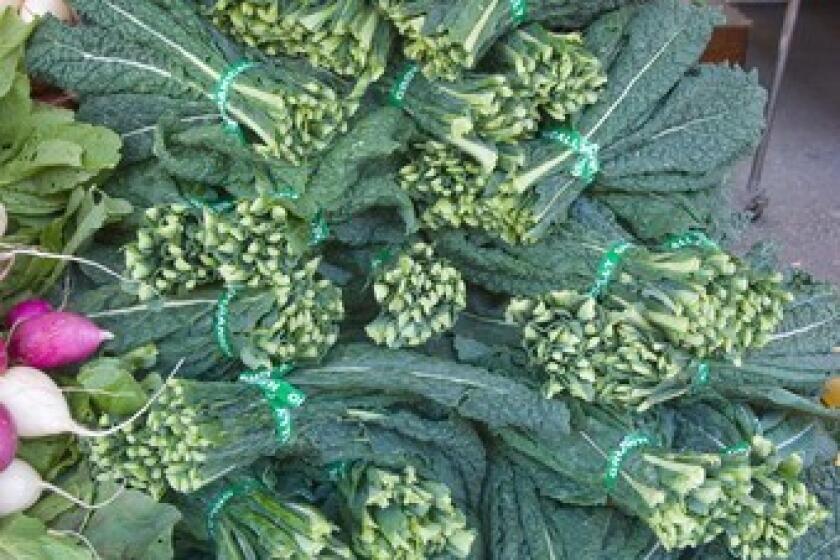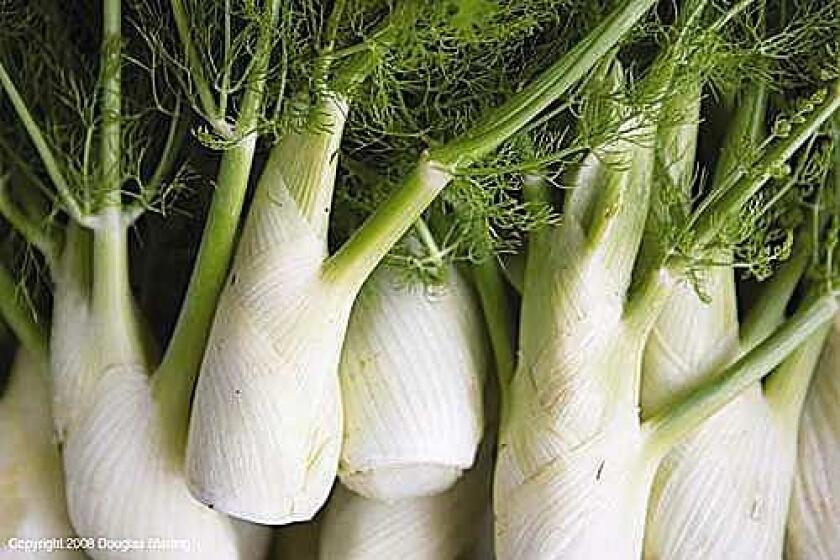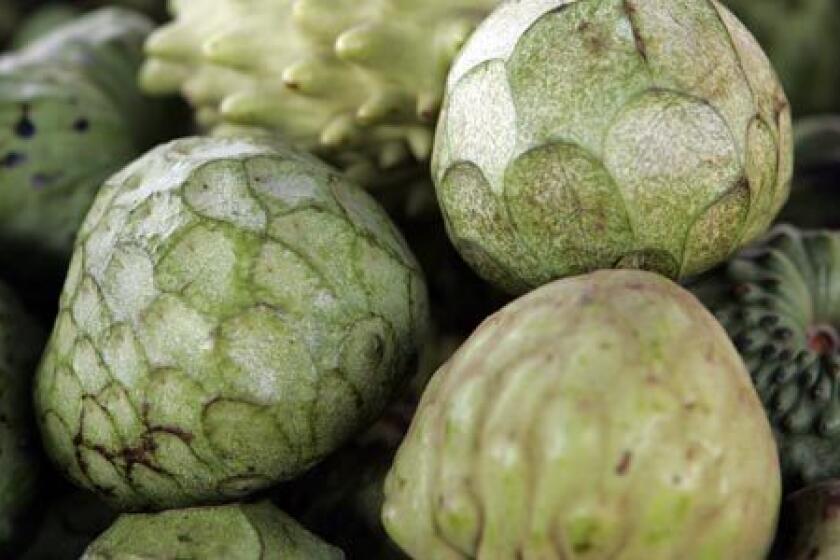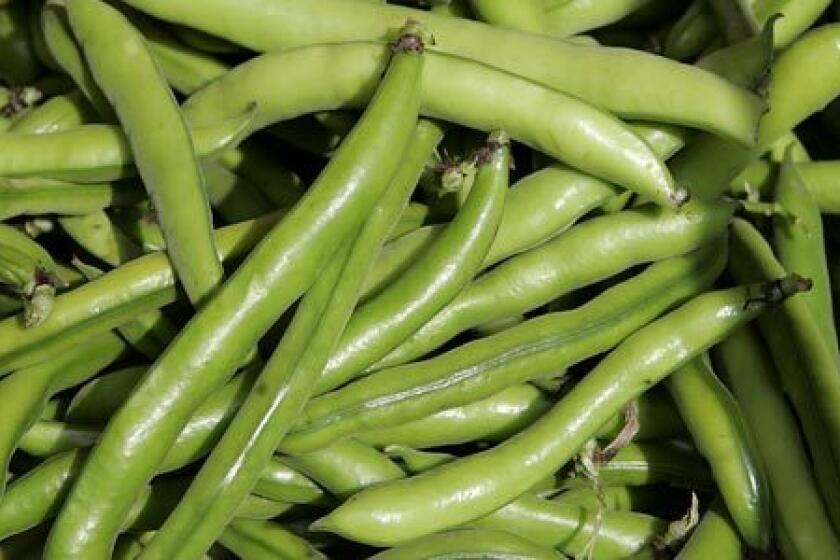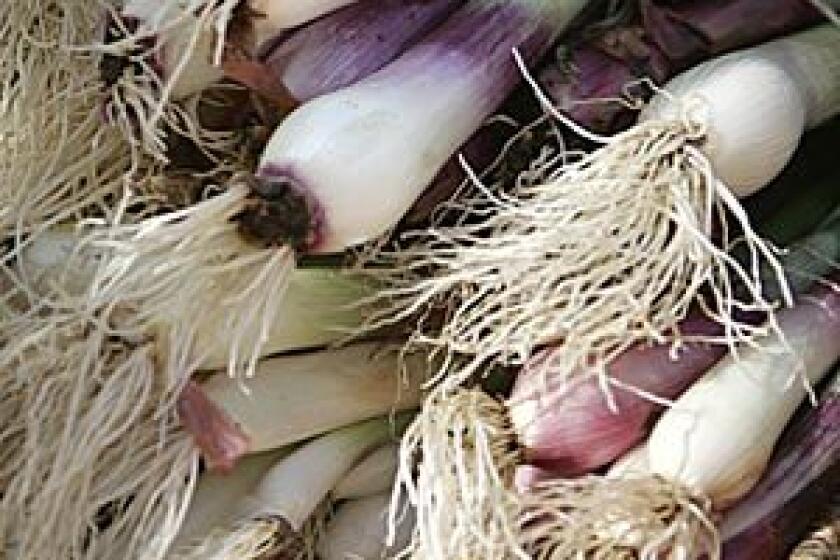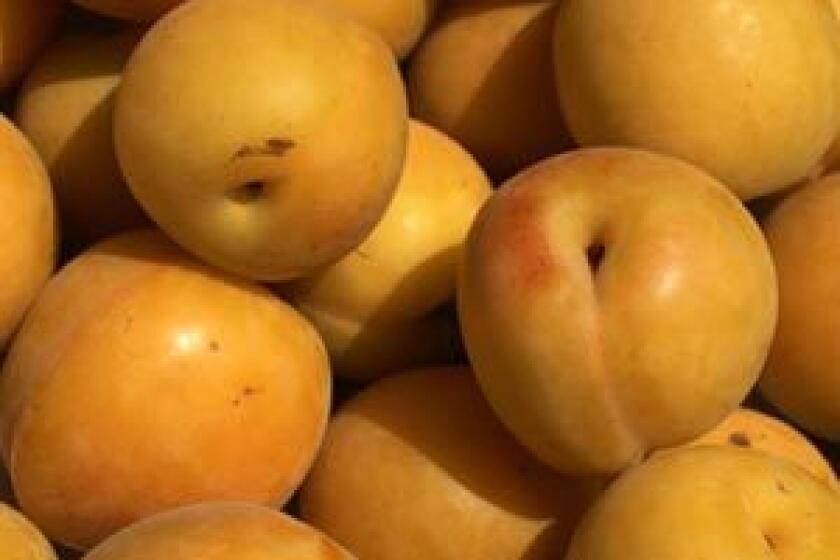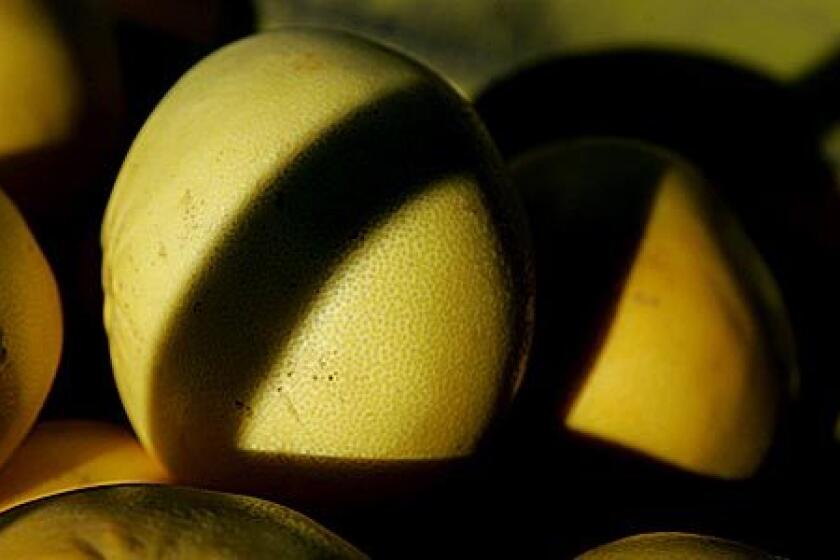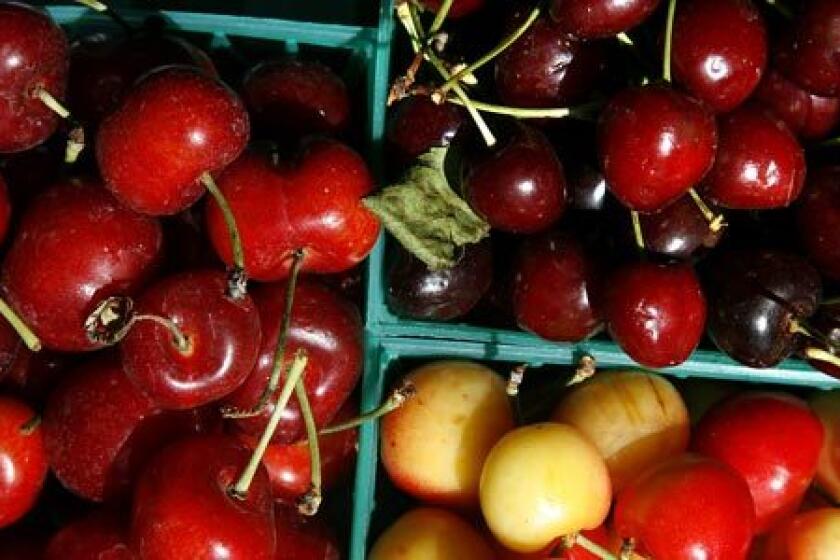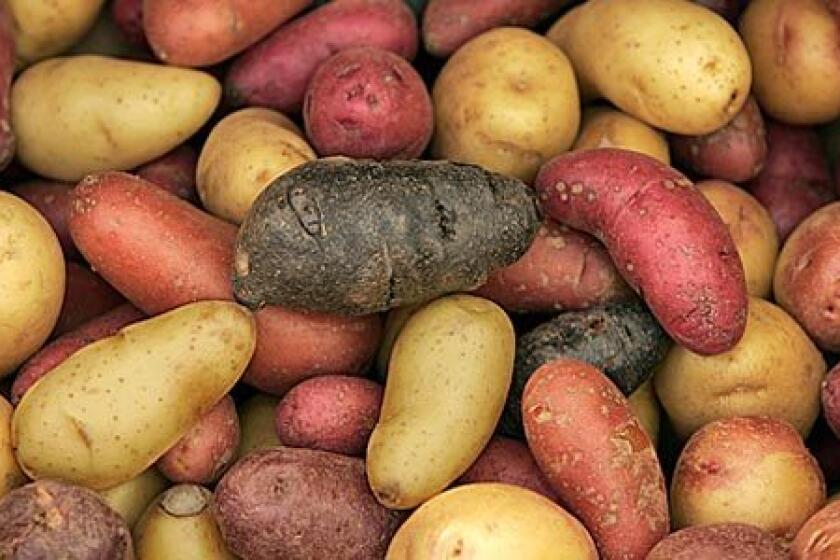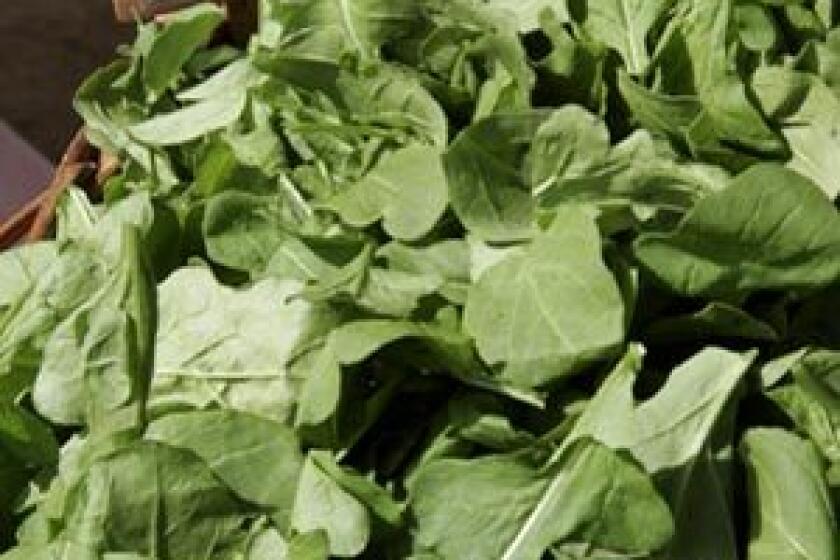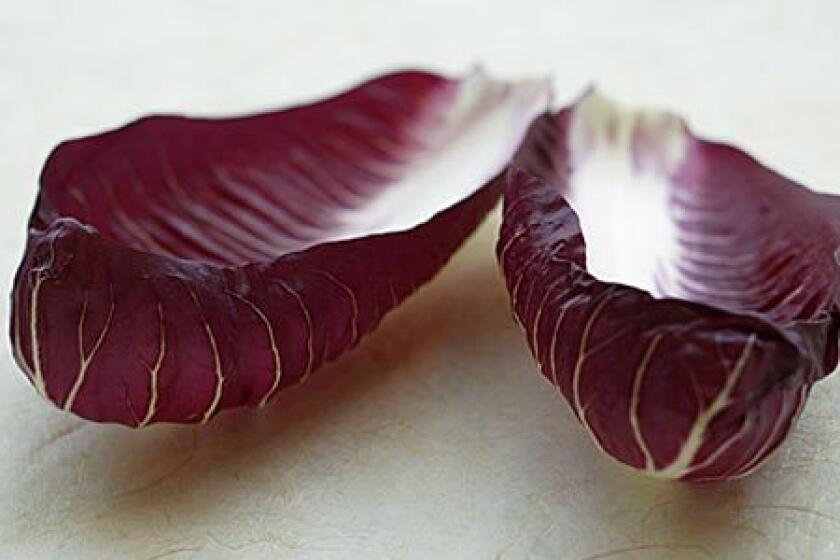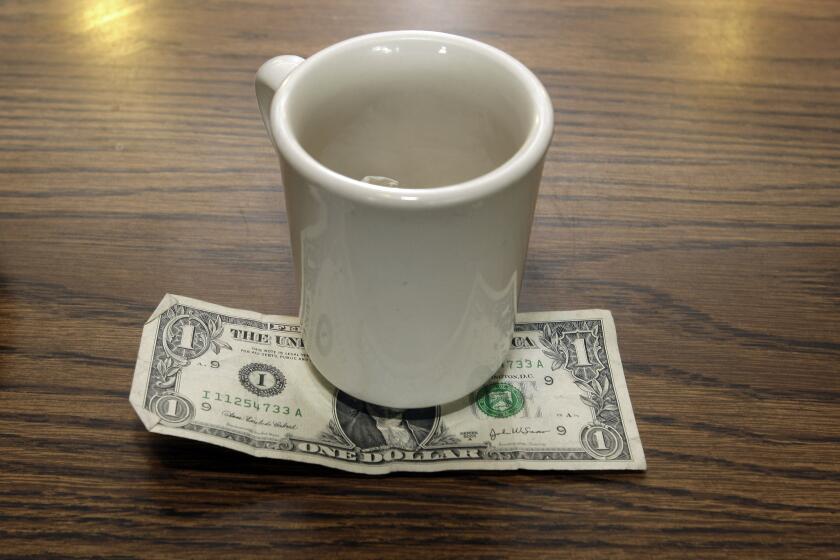Seasonal stories
- 1
Childhood trauma from eating canned lima beans? Get over it.
- 2
Why is it that people go crazy for carrots but ignore parsnips?
- 3
Take a head of broccoli, tint it lime green and decorate it with spires and minarets and you’ve got Romanesco.
- 4
It wasn’t so long ago that beets came in one color -- red -- and the most familiar way of serving them was so pickled they tasted mostly like vinegar.
- 5
Late fall is the start of wild mushroom season on the West Coast.
- 6
There are two main families of persimmons and though they may share color and flavor, in the most important ways they couldn’t be more different.
- 7
Yeah, yeah, I know -- Brussels sprouts?
- 8
They seem easy to overlook -- how special can a nut be?
- 9
Little known a decade ago, Asian pears have become very popular, particularly at farmers markets.
- 10
Never mind the name, these sweet, nutty squash are harvested in the fall.
- 11
Sweet and tangy as they are, pomegranates are undoubtedly the “un-convenience” fruit.
- 12
There are more than 100 varieties of persimmons, but for the most part they divide into two classes: the acorn-shaped Hachiyas and the tomato-shaped Fuyus.
- 13
We make a lot of fuss over heirloom peach varieties that date back to the 1960s and tomatoes that go back as far as the 1930s.
- 14
There is nothing at the farmers market that sums up the late summer-early fall season like the mounds of brightly colored peppers that seem to be everywhere.
- 15
At one time, Thompsons were the No. 1 table grape, raisin grape and wine grape in California.
- 16
If you’re at the farmers market and see what looks like a wilting mound of what must once have been beautiful string beans tinted with patterns of cream and crimson, don’t pass them by.
- 17
The sheer variety of eggplants in the market can be a bit overwhelming, but there is good news: For the most part, eggplant tastes like eggplant.
- 18
Peaches and nectarines are summer’s kissing cousins.
- 19
Most of the grapes you’ll find in the supermarket are sweet and crunchy and not much else.
- 20
If any fruit captures the sweet, dripping heart of summer, it’s a good melon.
- 21
What? Apples? Already? Can summer really have flown by that fast?
- 22
Once a rarity, white nectarines have become popular in the last 10 years.
- 23
Not so long ago, these little gems (think of what you can only dream of a blackberry tasting like) were so scarce that they were sold like contraband.
- 24
These are among the trickiest fruits to grow and to harvest, and it’s probably only because of their unmatched flavor that they’ve survived at all.
- 25
Luther Burbank was one of the most prolific plant breeders ever, responsible for developing the russet potato that bears his name as well as more than 800 varieties of fruits and vegetables.
- 26
How complicated can zucchini be?
- 27
For the most part, figs are a late summer crop, coming at the end of August into October.
- 28
Really great regular tomatoes don’t come around until the weather gets consistently hotter.
- 29
The world of green beans is split pretty neatly in two: the round and the flat.
- 30
So bright yellow they almost look orange, zucchini flowers are nearly irresistible to farmers market shoppers.
- 31
Once fairly hard to find at farmers markets, locally grown berries are everywhere now: raspberries (both red and golden), blackberries, olallieberries, boysenberries, loganberries, marionberries and even locally grown blueberries.
- 32
The first corn begins trickling into markets in the early spring from the desert growing areas, but starting in mid- to late-June, the flood really begins.
- 33
It used to be that we called them tangerines and they were a Christmas treat. Today we know better.
- 34
At last the strawberry fields seem to have shaken off January’s cold.
- 35
Even though so many of our traditional farmers market signals of spring have been converted to year-round production, there’s one that has resisted all attempts -- the pea.
- 36
Not so long ago, cauliflower was about the most boring looking vegetable on the planet, coming in beige and only in beige.
- 37
Bok choy has made it into the American produce mainstream, but there are other Asian greens and Chinese cabbages that are worth exploring.
- 38
This cool weather is perfect for bringing out the best in salad greens.
- 39
Markets are aswarm with radishes these days -- and for a very good reason: they’re among the fastest growing of all of the vegetables (as any veteran of elementary school science fairs can surely attest).
- 40
You can teach an old orange new tricks.
- 41
One of the most exciting developments at farmers markets in the last several years has been the proliferation of new types of mandarins, formerly known as tangerines.
- 42
Remember when carrots were orange?
- 43
You can find all sorts of kale at the market these days, including frilly pastel-colored flowering varieties and rough-edged Russian kale with its red border.
- 44
It’s hard to think about winter in Southern California without fennel.
- 45
While it is sometimes called “baby broccoli” and in fact looks like it might be a vegetable that was simply picked very early, broccolini is actually a fully mature example of a variety called Italian sprouting broccoli.
- 46
Of all of winter’s hardy greens, none are more popular than the many members of the kale family, and dark green, red-stemmed Russian kale may well be the sweetest of all.
- 47
Kumquats are a contrary fruit.
- 48
Cherimoyas: That’s not a hand grenade, it’s a cherimoya.
- 49
In San Juan Capistrano, spring is heralded by the arrival of the first swallows.
- 50
Artichokes are available pretty much all year round these days, but there are two separate peaks for production, and we’re in the middle of the first one right now.
- 51
Long before the marketing folks decided to re-brand prunes as dried plums, they renamed Jerusalem artichokes “sunchokes” with somewhat more success.
- 52
A spring onion isn’t a type of onion; rather, it’s an onion that has been harvested at an immature stage, when it has just begun to form a round bulb and the top is still green.
- 53
In the last several years, designer crosses between plums and apricots have been progressively more popular.
- 54
There are many reasons to love living in California, but ranking high among them are the avocados.
- 55
Whether they’re the pale gold varieties or the dark orange ones that are mistakenly called yams, sweet potatoes are one of the most traditional highlights of the table at this time of year.
- 56
These are the kings of the edible-pod peas, a class that also includes the flat snow peas.
- 57
These large citrus fruits are frequently called grapefruit, but in reality they are a cross between a grapefruit and a pummelo (those giant, head-sized citrus you see around the holidays).
- 58
Cherries are one of those foods that inspire a feeding frenzy on first sightings.
- 59
Many people generically refer to any small potato as “new,” but there’s a lot more to it than that.
- 60
It’s getting so that garden-variety arugula is almost as common as romaine.
- 61
It used to be that radicchio was one of those oddball vegetables that you could find in the grocery store but not very often at farmers markets.
- 62
Asparagus, once a reliable harbinger of spring, is pretty much a year-round presence at Southern California farmers markets these days thanks to a peculiarly mild microclimate outside of Lompoc.
